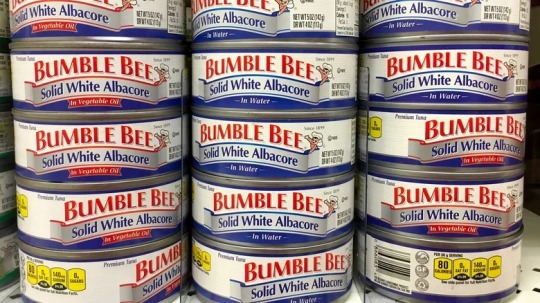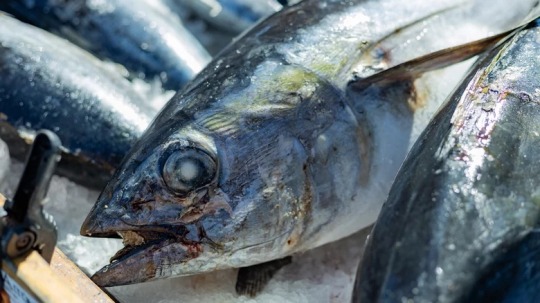#that sea king isn't the most delicious source of protein
Text
Are you the catcher or are you getting caught?

(for @heart-pirates-week day 8, Hakugan & caught)
When the debate of who gets to fish escalates:
In midst the scuffle, Hakugan tumbles over the edge. Penguin reacts instantly; a precise swing with the fishing rod prevents the man from an uncomfortable, wet collision. "Nice catch!" the masked man shouts. But now, dangling in the air as the hook secures the unlucky fellow just right, his initial enthusiasm quickly dies down. Being a skilled fisherman, Hakugan is used to do the catching. And not end up as the catch himself. Eying the rippling ocean surface, his gaze locks with smoldering, danger promising orbs. But he wouldn't be a Heart pirate if he couldn't turn this into something fruitful. If it means to act as bait for now, then so be it! Hopefully the creatures meat will be worth the hassle when they'll barbecue it with the crew later. Because one thing is certain: The one who will overshadow their prey is him. The outcome already decided as the noose pulls tight around the beast's fate; hook, line and sinker.
Day 1 Day 2 Day 3 Day 4 Day 5 Day 6 Day 7 Day 8 Day 9
#one piece#heart pirates#hakugan one piece#heart pirates week 2024#melan's art#melan's brainrot#that sea king isn't the most delicious source of protein#but with the success flowing through their veins everything tastes better by default
17 notes
·
View notes
Text
Why You Should Always Read The Label On Canned Tuna

— BY HALDAN KIRSCH | JULY 19, 2022
Canned tuna is a classic pantry staple that can make for a quick and easy meal any time of the day. Full of protein, vitamins, and healthy fats, canned tuna is shelf stable and has earned it a permanent spot in many American pantrys. According to a National Fisheries Institute survey, more than half of Americans keep some form of preserved tuna in their homes.
Canned tuna is safe to eat for up to four years as long as it is undamaged (via National Fisheries Institute). That means that when late-night cravings hit you can easily whip up a quick tuna salad, or go gourmet, and turn it into a batch of delicious tuna croquettes. It can also get mixed up with other produce along with common spices and condiments found around the house to help clear out the refrigerator.
Canned Tuna Has Some Health Pluses

In addition to being tasty, all of these aforementioned recipe options are fairly nutritious. According to Healthline, canned tuna has approximately six to eight grams of protein per ounce. It's also a great source of Omega-3 fatty acids, selenium, iodine, and vitamin D.
As great as canned tuna can be though, it does come with some drawbacks.
When buying canned tuna it's important to look at the label and make sure that it is made with a type of tuna that is known to contain less mercury.
What Mercury Poisoning Will Do

According to Healthline, mercury is a dangerous mineral that builds up in the fatty flesh of tuna because of its large size. Consuming too much mercury can lead to some health risks, such as impaired brain function, focus, and memory. These adverse effects will likely not be noticeable right away, as the mercury takes time to amass in your body — just like in tuna. In addition to affecting your brain, high levels of mercury have been tied to heart disease and an increase in heart attack risk.
Because of mercury levels, the outlet recommends not consuming tuna on a daily basis despite its health benefits. Mercury poisoning can also be extremely harmful to pregnant people and children.
Certain Canned Tuna Contains Higher Levels of Mercury

Eat This, Not That! notes that the mercury content in canned tuna does depend on the kind of tuna being consumed though. According to the Environmental Defense Fund, albacore tuna, which is most commonly labeled as white tuna, contains three times the amount of mercury as skipjack tuna. Skipjacks are advertised as light tuna and are a smaller variety of tuna. They often contain less mercury because of their size.
Registered dietician nutritionist Lauren Manaker, MS, RDN told Eat This, Not That! that canned tunas which name the kind of tuna they contain are your best bet to avoiding high levels of mercury. It allows you to avoid large tuna, like yellowfin or albacore, and stick to the smaller kinds that can be safely consumed more often.
Other Canned Fish To Avoid Regular Consumption

While the allure of canned tuna — its health benefits, convenience, and shelf life — make it a great pantry contender, there are other canned fish options that too should be avoided on a daily basis due to mercury levels. As noted by Nutrition Advance, while albacore takes the top spot as far as mercury levels are concerned, other fish varieties such as canned anchovies, canned crab meat, canned herring, and canned kippers shouldn't be consumed more than three times a week. Once you move away from the canned variety and are browsing the fish counter, you should really avoid options including swordfish, shark, or king mackerel, as those fish options have some of the highest levels of mercury around (per WebMD).
If you really want to avoid mercury at all costs while still getting your weekly fix of seafood, WebMD noted that the fish varieties with the least amount of mercury include shrimp, catfish, pollock, and salmon. So if tuna isn't the taste of the sea you're in search of (or you're looking for other safe options), these are a good bet.
Environmental Impact of Canned Tuna

In addition to mercury content, it's also important to consider the environmental impact of your canned tuna selection. According to the World Wildlife Fund, tuna is a fish that has grown in popularity in recent decades, causing certain species of tuna to be in danger of overfishing. Some tuna fishing methods are also harmful to other ocean wildlife as well. Bycatch, or unwanted animals caught in tuna fishing nets, can sometimes make up 28% of a catch, harming populations of species like dolphins and sea turtles that are being killed needlessly. Because of these issues, it's important to look for the type of tuna being purchased and how it was caught.
Seafood Watch also recommends avoiding any canned tuna that are caught using Fish Aggregating Devices (FADs), which are responsible for much of the industry's bycatch issues. Instead, it recommends looking for phrases like "pole-caught," "troll-caught," or "pole and line caught" on cans. These indicate the tuna was sustainably fished using methods less likely to harm other species.
Brands To Look For When Considering Sustainability

The Monterey Bay Aquarium Seafood Watch recommends buying canned tuna from brands that are eco-certified by the Marine Stewardship Council, or that they rate as "green Best Choice" or "yellow Good Alternative." It recommends the brands American Tuna, Fishing Vessel St. Jude, Mind Fish Co., Ocean Naturals, Safe Catch, Wild Planet, and Whole Foods as good options.
Greenpeace also offers its own recommended brands and shopping methods, with many of those brands matching up with Monterey Bay Aquarium Seafood Watch's suggestions. In addition to confirming Wild Planet, Ocean Naturals, and American Tuna as good options, Greenpeace suggests specific types of tuna from grocery store brands, like Trader Joe's skipjack, Costco's Kirkland Signature skipjack, and Hy-Vee's Select Responsible Choice in either skipjack or albacore.
For the best canned tuna for your body and for the planet, look for a low mercury tuna that has been sustainably sourced using key phrases printed on the label.
Tuna Facts:

When it comes to healthy eating, canned tuna has it all. It is rich in protein, low in fat and calories and is an excellent source of the essential omega-3 fatty acids which help to lower blood pressure and cholesterol.
Who eats canned tuna and why? The following statistics provide an up-to-date look at the market for canned tuna in the United States:
The European Union, the United States and Japan are the largest consumers of canned tuna, using about 51 percent, 31 percent and 6 percent, respectively, of the world’s canned tuna products.
Tuna in all forms represents more than one-third of the total fish and seafood segment in the U.S. and more than half of the finfish segment.
Canned tuna is the second most popular seafood product in the U.S. after shrimp.
In the U.S., Americans eat about 1 billion pounds of canned and pouched tuna a year. Only coffee and sugar exceed canned tuna in sales per foot of shelf space in the grocery store.
In 2007, Americans ate 2.7 pounds of canned tuna per capita.
Surveys find that 88 percent of all American households have enjoyed canned tuna. In fact, almost half of all households serve canned tuna monthly and 17 percent serve canned tuna at least once a week.
Research finds that about one in four American consumers – 23 percent – serve tuna once or more a week. Nearly another 40 percent serve canned tuna two to three times a month, while 29 percent serve it once a month and 10 percent serve canned tuna about every three months.
Although most Americans enjoy canned tuna, the largest households serve it the most.
Of those Americans who eat canned tuna, the vast majority, 83 percent, eat it for lunch. In fact, canned tuna is the only regularly consumed seafood at lunch.
Approximately 45 percent of tuna consumers serve canned or pouched tuna for dinner.
Over one half of canned tuna, 52 percent, is used in sandwiches. Another 22 percent is used in salads while 15.5 percent is used in casseroles and helpers and 7.5 percent is used in base dishes.
Households with children under 18 are about twice as likely to have tuna sandwiches available than households without children.
Americans eat more tuna in the summertime – nearly 30 percent of tuna eating occasions are during the summer. Consumption is lowest in October, November and December.
The most popular kind of canned tuna? Chunk, light meat in water. Light meat (in water and oil) accounts for 75 percent to 80 percent of annual domestic canned tuna consumption. Albacore, or white meat, accounts for the rest.
Most canned and pouched tuna comes from skipjack and albacore tuna. Approximately 70% of the canned and pouched tuna Americans enjoy is skipjack (or some small amount of yellowfin). About 30% is albacore – otherwise known as white tuna.
Stocks of skipjack tuna – source of 60% of the global annual tuna catch – are considered by scientists and industry experts to be strong and sustainability fished worldwide.
Bluefin tuna – the focus of vigorous conservation efforts – is not used in commercial canned and pouched tuna products. America’s tuna companies actively participate in bluefin conservation initiatives.
The U.S. Food and Drug Administration (FDA) recommends eating up to 12 ounces (2 average meals) a week of a variety of fish and shellfish that are low in mercury – including tuna.
A diet rich in fish that are high in omega-3 fatty acids, like canned tuna, can curb or prevent cognitive decline, dementia, depression, neuropsychiatric disorders, asthma and inflammatory disorders.
Unopened canned tuna has a recommended shelf-life of up to four years, provided that the product has been stored under normal conditions and is not damaged. Pouched tuna has a shelf-life of three years.
— By National Fisheries Institute
0 notes